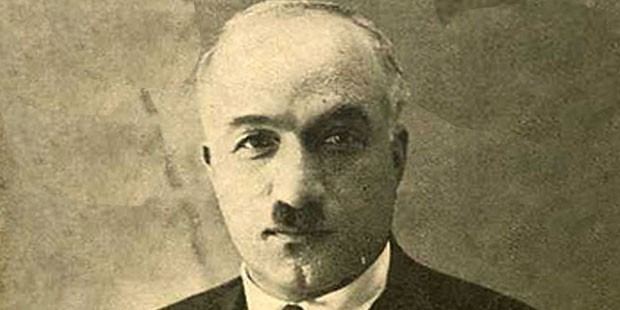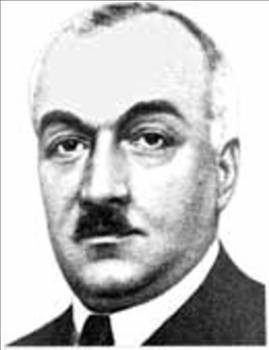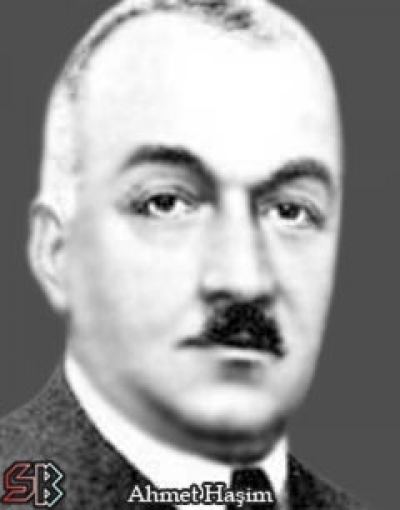Name Ahmet Hasim | Role Poet | |
 | ||
Died June 4, 1933, Kadikoy, Turkey Books Bize Gore, Bir gunun sonunda arzu, Piyale, Gol Saatleri, Frankfurt Seyahatnamesi, Paris, Frankfurt... Yahut Hic! Parents Sara Hanim, Ahmet Hikmet Bey Education Galatasaray High School (1897–1907), Istanbul University Similar People Yahya Kemal Beyatli, Ahmet Hamdi Tanpinar, Cahit Sitki Taranci, Tevfik Fikret, Orhan Veli Kanik | ||
Piyale-Ahmet Haşim
Ahmet Hasim (also written as Ahmed Hasim; احمد هاشم ; 1884? – 4 June 1933) was an influential Turkish poet of the early 20th century.
Contents
Biography

Ahmed Hasim was born in Baghdad, probably in the year 1884. His father was the provincial governor of the Ottoman sanjak of Fizan. Around 1893, Ahmed went to Istanbul with his father, following the death of his mother. In 1906, having graduated from the Mekteb-i Sultani (now Galatasaray High School), he began work in the Reji, the state tobacco monopoly, and was registered at Istanbul University's school of law. Between 1908 and 1910, Hasim worked as a French language teacher in the city of Izmir and as an officer in the Office of Public Debts (Duyun-u Umumiye). He was conscripted in the First World War, serving mostly in Anatolia; following the war, he returned to Istanbul and worked in the Ottoman Bank. After the foundation of the Republic of Turkey, Hasim worked as a teacher of aesthetics in the Academy of Fine Arts and as a French language teacher at Istanbul University. For many years, he also wrote essays for the newspapers Aksam and Ikdam.
Ahmed Hasim died on 4 June 1933, and was laid to rest at the Eyup Cemetery.
Works

Ahmed Hasim's first poems were published in Mecmua-i Edebiye (مجموعه ادبيه; "Literary Periodical") between 1900 and 1912. At this time, he was a member of the movement known as Fecr-i Ati (ﻓﺠﺮ ﺁﺕﯽ), or "Dawn of the Future". Later, he would publish together with other poets in the periodical Dergah (درگاه). In 1921, at around this time, he published his first book of poetry, Gol Saatleri (گول ساعتلرى; "Hours of the Lake"). His second book of poetry, Piyale (پياله; "The Wine Cup"), would follow in 1926.
Hasim's early poetry was very much in the Parnassian and Decadent vein of the poets Tevfik Fikret (1867–1915) and Cenab Sahabeddin (1870–1934), early influences who were a part of the Edebiyyat-i Cedide (ادبيات جدیده; "New Literature") movement. Hasim's later poetry, however—collected in Gol Saatleri and Piyale—evidences more of a French Symbolist influence, particularly that of Henri de Regnier, whom Hasim greatly admired. This late poetry can—to a certain extent—be seen to adhere to the Fecr-i Ati movement's variation of the Symbolist motto: "Sanat sahsi ve muhteremdir" (صنعت ﺵﺨﺼﯽ و محترمدر; "Art is personal and sacred"). In line with this motto, and with the Symbolist movement in general, much of his poetry was more indirect than direct, using thick imagery so as to create a strong sensory impression, as in the opening lines of his famous poem from the book Piyale, "Merdiven" ("Stairway"):
آغير، آغير چيقه جقسْك بو مرديونلردن أتکلرکده کونش رنکى بر ييغين ياپراق ..و بر زمان باقاجقسك سمايه آغلايه رق ،صولر صاراردى ... يوزك پرده پرد صولقده ..قزيل هوالرى سيرايت که آقشام اولقده Agir, agir cikacaksin bu merdivenlerden, Eteklerinde gunes rengi bir yigin yaprak, Ve bir zaman bakacaksin semaya aglayarak.. Sular sarardi.. yuzun perde perde solmakta, Kizil havalari seyret ki aksam olmakta... Slowly you will ascend these stairs, A bundle of sun-colored leaves on their edges And for a while you will look, weeping, at the skies... The waters blanch.. as your face pales step by step, See the reddened air as the evening stes inThis poem also shows one of the tropes that Hasim shares with the Symbolists; namely, he uses carefully selected natural images to express the emotional state of the poem's persona. Many of Hasim's later poems, especially those collected in Piyale, use this technique in a very brief and evocative fashion, showing the influence not only of Symbolism, but also of the haiku poetry that Hasim was reading at the time.
